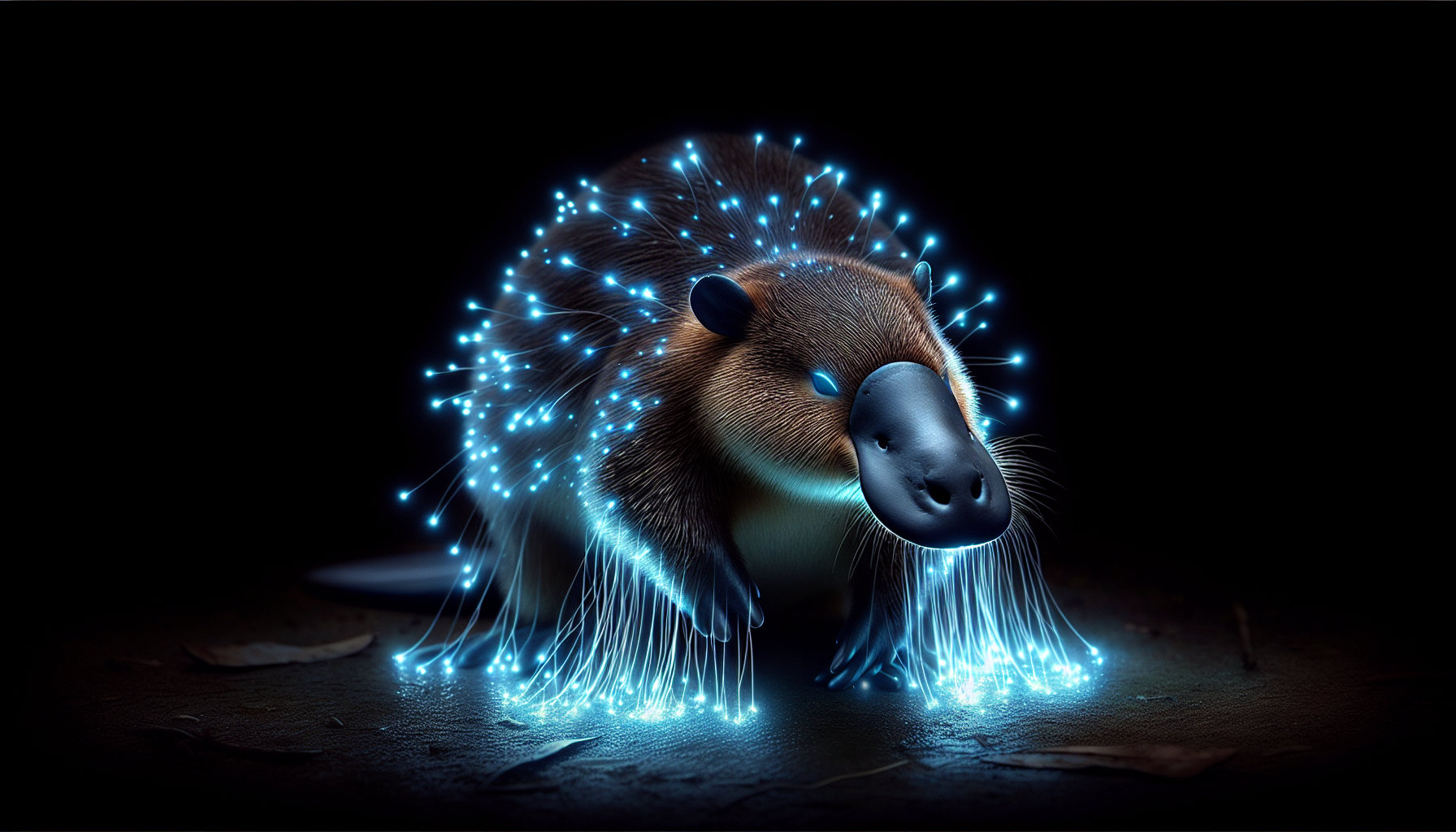
Platypuses just keep getting weirder—they glow in the dark! In 2020, scientists at Northland College in Wisconsin discovered that platypus fur glows a greenish-blue color under UV light, a trait called biofluorescence. They were studying museum specimens when they noticed the glow, and later confirmed it in live platypuses too. This makes them one of the few mammals known to have this quirky feature, alongside flying squirrels and some opossums.
Here’s the mystery: no one knows why they glow! In other animals, biofluorescence might help with communication or attracting mates—like how some fish use glowing patterns to flirt. But platypuses are nocturnal and have poor eyesight, so it’s unlikely they’re showing off their glow to each other. One theory is that the fluorescence helps them blend into their surroundings at twilight, making them harder for predators like birds of prey to spot. Another idea is that it’s just a leftover trait from their ancient ancestors, with no real purpose today.
The glow isn’t something you’d see with the naked eye—you need a UV light to catch it. Researchers found that the platypus’s dense, waterproof fur absorbs UV light and re-emits it as a soft glow, most visible on their belly. It’s not as bright as a glow stick, but it’s still pretty wild for a creature that already lays eggs and has venomous spurs. So next time you think of a platypus, imagine it lighting up the night in its own subtle way—it’s a glowing fact that makes this animal even more magical. Share this with your friends and come back for more platypus trivia!

Leave a Reply